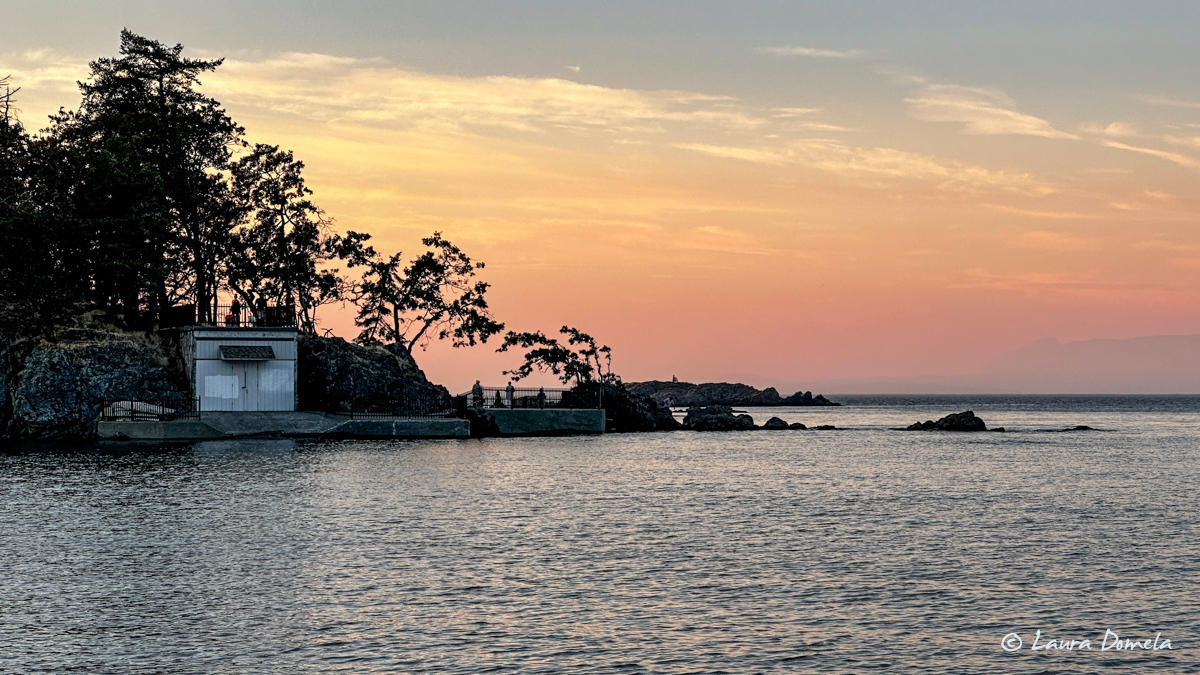We had a very nice visit to Campbell River. We even went for dinner out with our friend Scott. (Yay, a night off of cooking!) We made an early dinner reservation for outside on the patio at the Harbor Grill (just at the top of the ramp from the marina). We’ve been eating so much seafood, and we love seafood, but tonight we went for turf over surf — filet mignon for Kevin and chicken cordon bleu for me — and a lot of fun catching up with Scott.
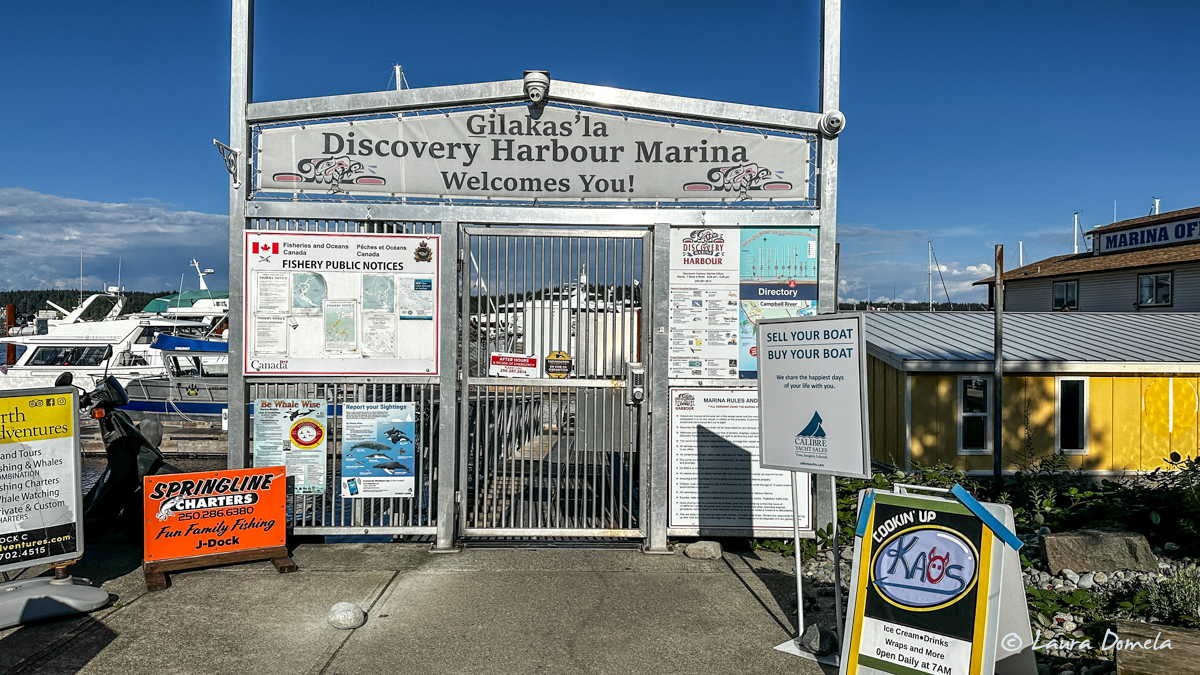
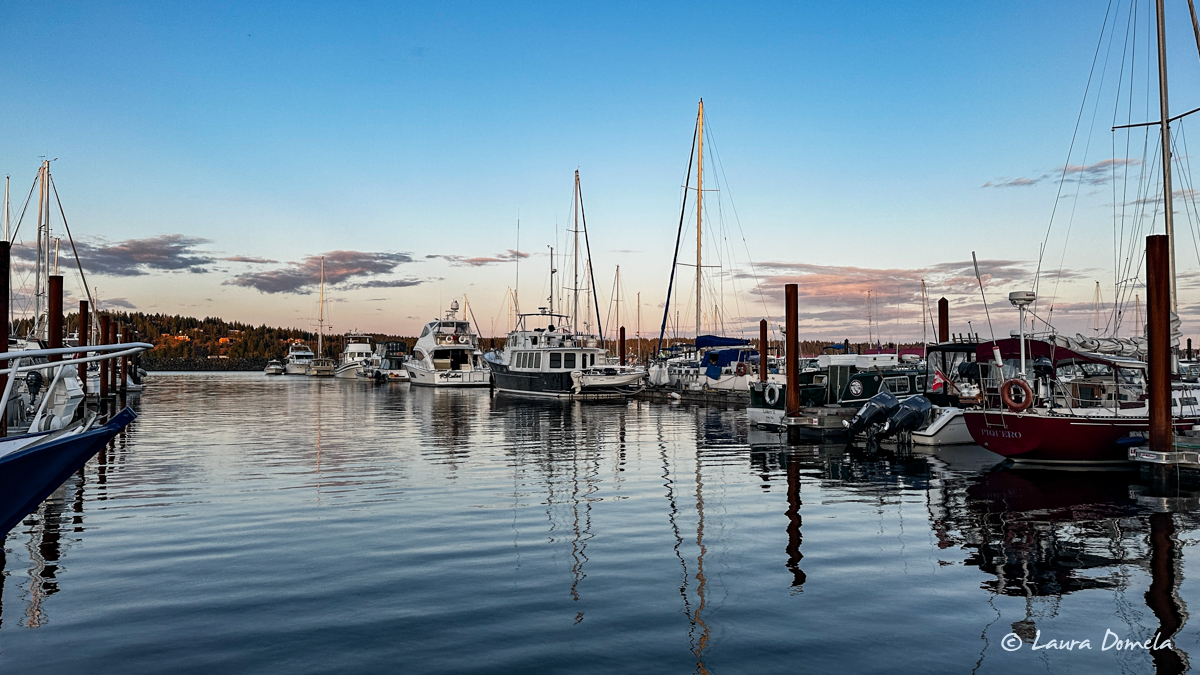
We met and chatted with a guy on a 50ft sailboat tied to the dock behind us. He was single-handing his boat, and he said he was planning to leave in the morning at first light (and said he was slightly nervous about being solo and getting off the dock). We opted to leave early as well (instead of noonish as we had originally planned) and offered to help him with lines, for which he enthusiastically thanked us.
Our alarm went off 5:45am. Still mostly dark. We dressed and met our boat neighbor on the dock. We were on a linear dock, stern to stern, and there was about 30 feet between our boats. There was a slight on-dock wind. I asked what his plan was, and to let us know what he wanted us to do. He had a spring line and a stern line tied to the bull rail, and said he was planning to back up as far as he could toward Airship, and if we could help walk him back that would be great.
Kevin held the stern line and I held the midship/spring line and we began walking the boat backward, holding it away from the dock. We believed we were going to help him walk the boat back another 15 feet or so toward Airship (to give himself ample room to maneuver when it was time to depart) and then stop, toss his lines onboard, and at that point he would maneuver as needed to leave the dock. However, without warning, as we were only about halfway back toward Airship, he put the boat in forward gear with the helm hard to port. This pushed the stern (and his dinghy hanging on his stern davit) immediately into the dock (with no fender for protection). As he gunned it forward, Kevin and I had to scramble FAST in order to throw the lines back onto his boat (so they didn’t just drag off in the water and get fouled in his prop!) and get out of the way. As the stern scraped down the dock, still with the bow pointed hard to port and the boat moving forward, the dinghy swung over the dock and was headed directly to hit the vertical piling (or me, because I was between the dinghy and the piling). As I tried to get out of the way, I unintentionally stepped straight into the opening for the piling, plunging my right leg into the water, the inside of the dock scraping my shin the whole way down. I caught myself on the dock and bull rail with my elbow and hip. Luckily, because of this fall, the dinghy missed my head and instead hit the piling right over my head. It all happened so fast, and left us feeling pretty bummed standing/sitting there on the dock as our boat neighbor headed out into the sunrise with likely no idea how badly that went.
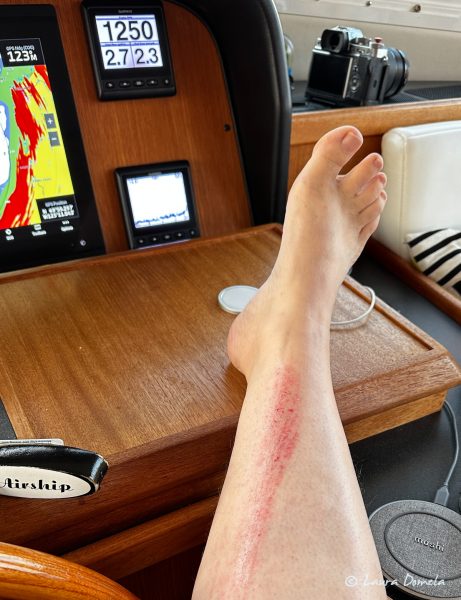
We assume he must have been quite nervous, because there was very little communication and it didn’t seem like he followed the plan that he set forth. Here are some of our takeaways:
First, when you’re helping someone with lines, be very aware of your surroundings and situation. Don’t assume the skipper will do what you expect, or even what they said. Keep your body out from between the boat and the dock and anything else that could catch or crush you. You are more important than your (or someone else’s) boat.
Similarly, if people are helping you with dock lines, communicate clearly. Don’t assume they will do the right thing automatically, or that they know your plan. (And don’t suddenly gun it and pull away from the dock with people still holding your lines.)
Third, take your time. In this case, there were two steps that didn’t have to be done in rapid succession. We could have moved the boat back to the best location, stopped, and had a nice meeting to chat about what was going to happen next.
Fourth, a boat does not steer like a car. Perhaps, in a slight panic, he tried to “steer the bow away” from the dock by turning the helm away from the dock. Unfortunately, since boats steer from the rear, what this actually did was steer the stern INTO the dock.
Finally, use plenty of fenders. Think about what’s going to happen as your do your maneuver and have fenders everywhere you might possibly need them. Sometimes, this might even be on the other side of the boat. This boat scraped its stern down the dock for probably 15 feet before it managed to pull away, and a fender-width of clearance might have helped the dinghy miss the piling (and avoided scratching his boat).
We went back onto Airship and I cleaned my leg with hydrogen peroxide and Neosporin, put arnica gel on the bruised spots, and after a little regrouping and some deep breaths, we untied our lines and headed south.
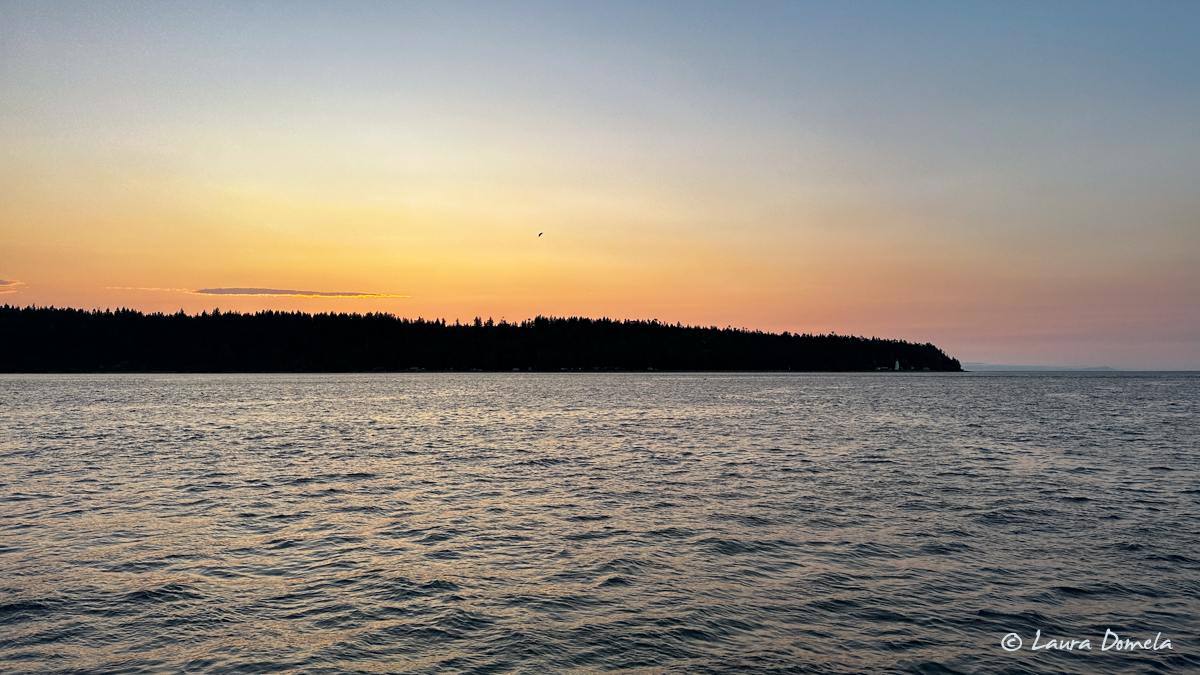
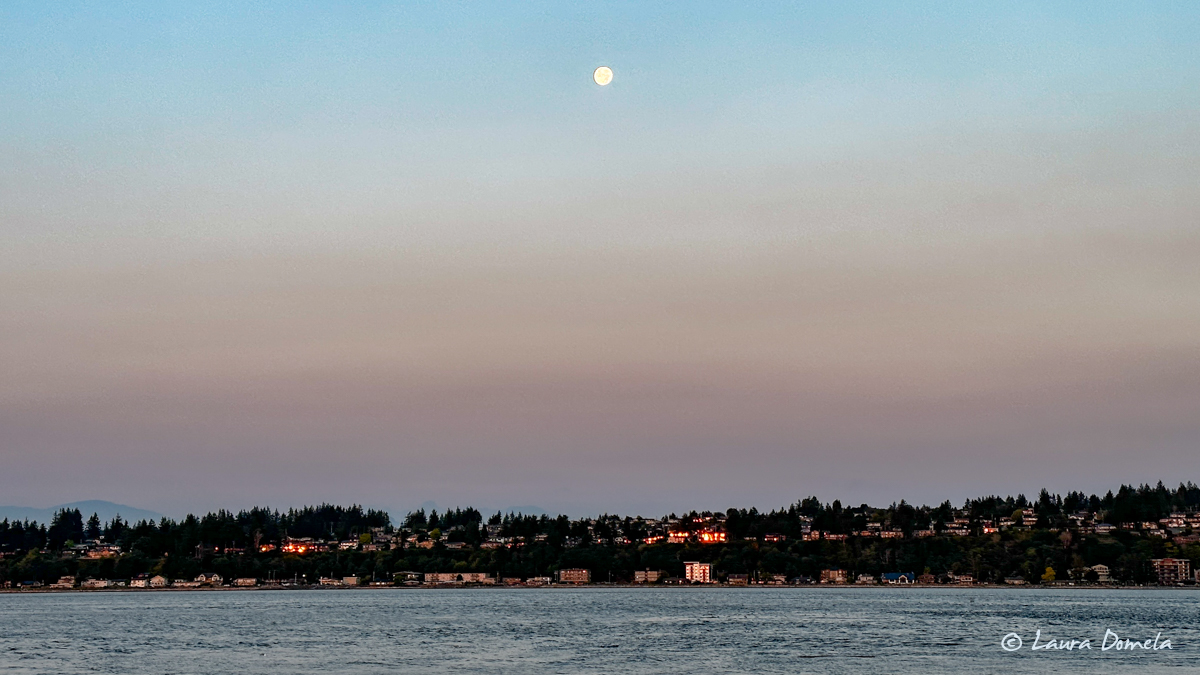
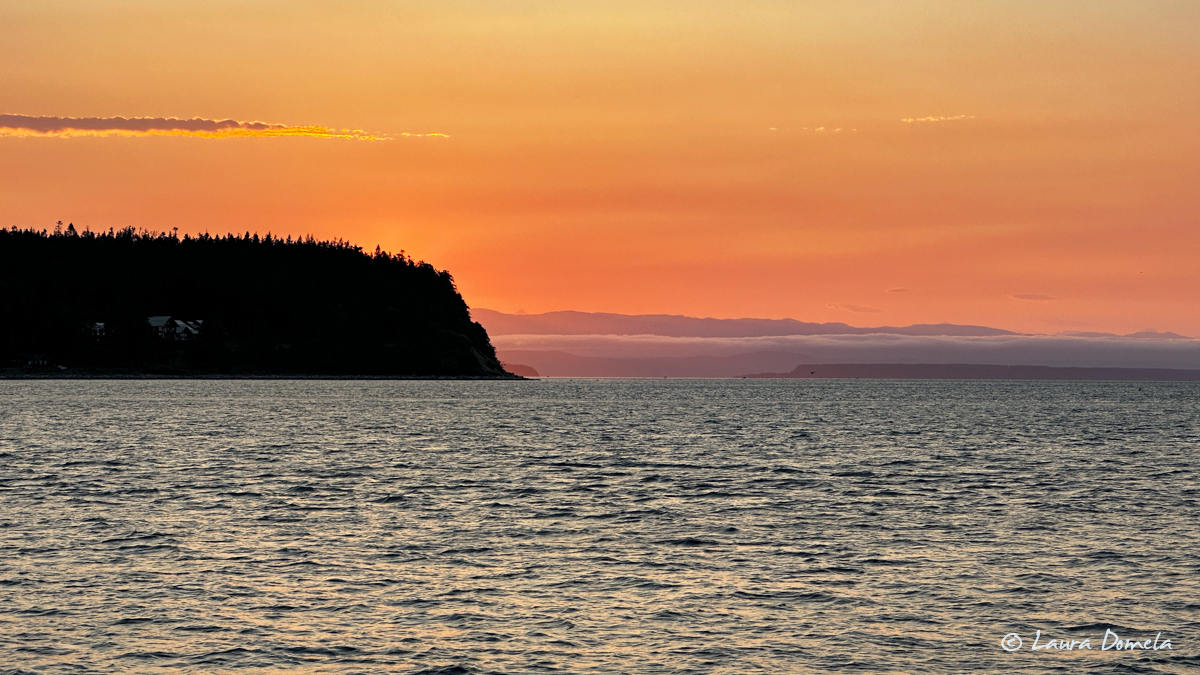
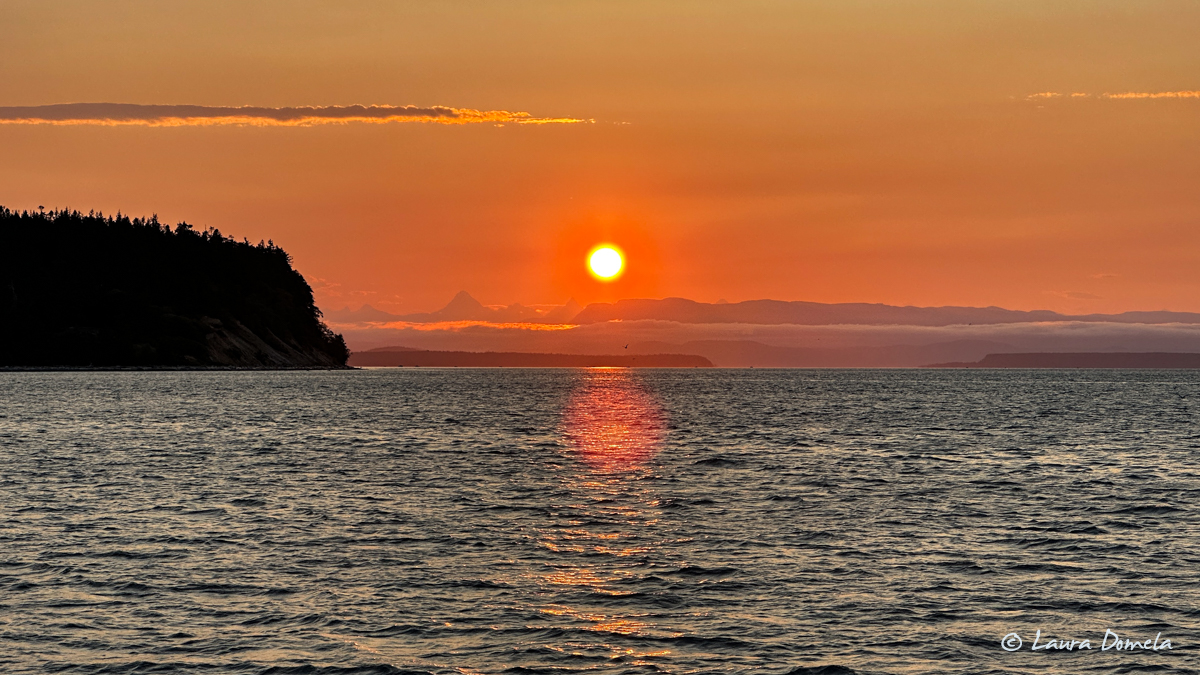
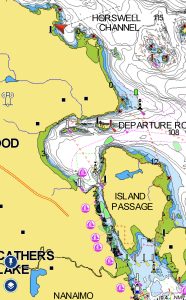 We originally thought we’d stop at Tribune Bay on Hornby Island today, but it was too early to stop in such nice conditions in the Strait of Georgia. We considered Newcastle Island/Nanaimo, but unfortunately it’s the Friday of Labor Day Weekend, so the likeliness we’d find room at Newcastle is next to zero, and we don’t really want to get an expensive slip in Nanaimo for one night when we don’t really need to do anything in town. We set our course for a spot just north of Nanaimo called Hammond Bay.
We originally thought we’d stop at Tribune Bay on Hornby Island today, but it was too early to stop in such nice conditions in the Strait of Georgia. We considered Newcastle Island/Nanaimo, but unfortunately it’s the Friday of Labor Day Weekend, so the likeliness we’d find room at Newcastle is next to zero, and we don’t really want to get an expensive slip in Nanaimo for one night when we don’t really need to do anything in town. We set our course for a spot just north of Nanaimo called Hammond Bay.
While not completely protected from the wind, there’s very little chop or wave action where we dropped the hook. On the screen shot of the chart to the right, we are were the red arrow at the top of the image is, and Nanaimo is south of us where all the little pink marina symbols (and boats!) are.
The shore is lined with houses, there are a lot of people enjoying the beaches (kids swimming, people paddleboarding, kayaking, etc.) and some noise from construction mixes with the sounds of happy kids. It’s not amazing, but it’s not crowded and it’s free, and mostly protected. We’re good for the night!
Tomorrow…onward!
Here are a couple of shots looking toward the south shore of Hammond Bay, because the light was great. How adorable are those little beach cabins?
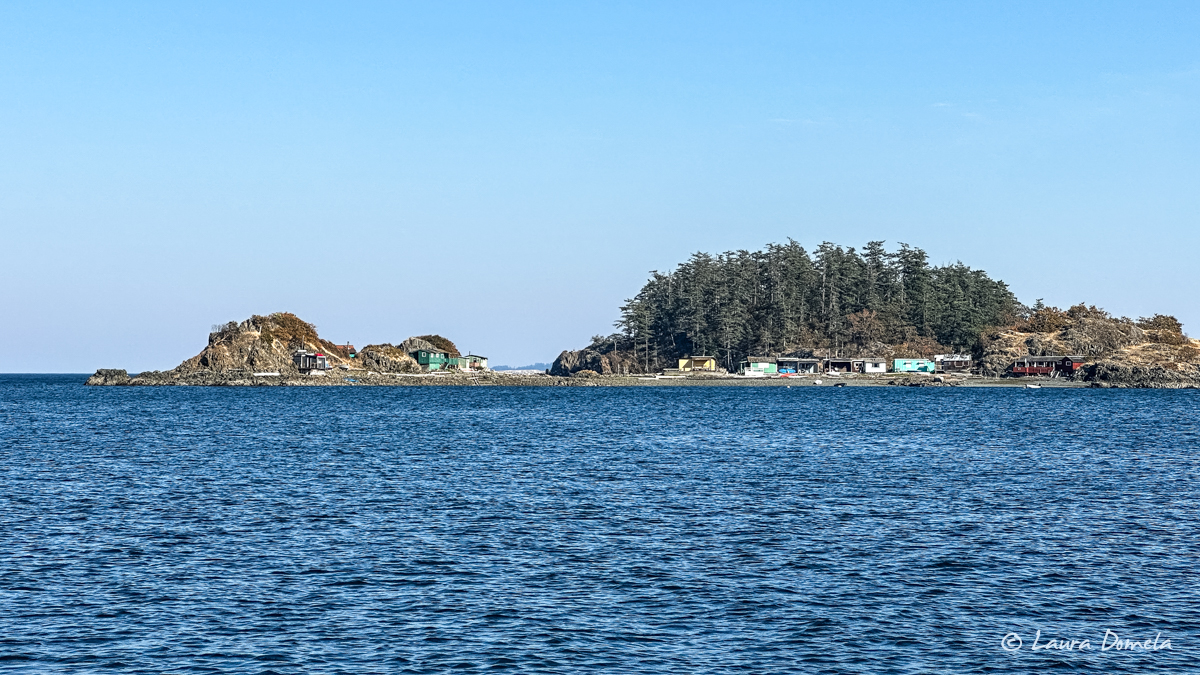
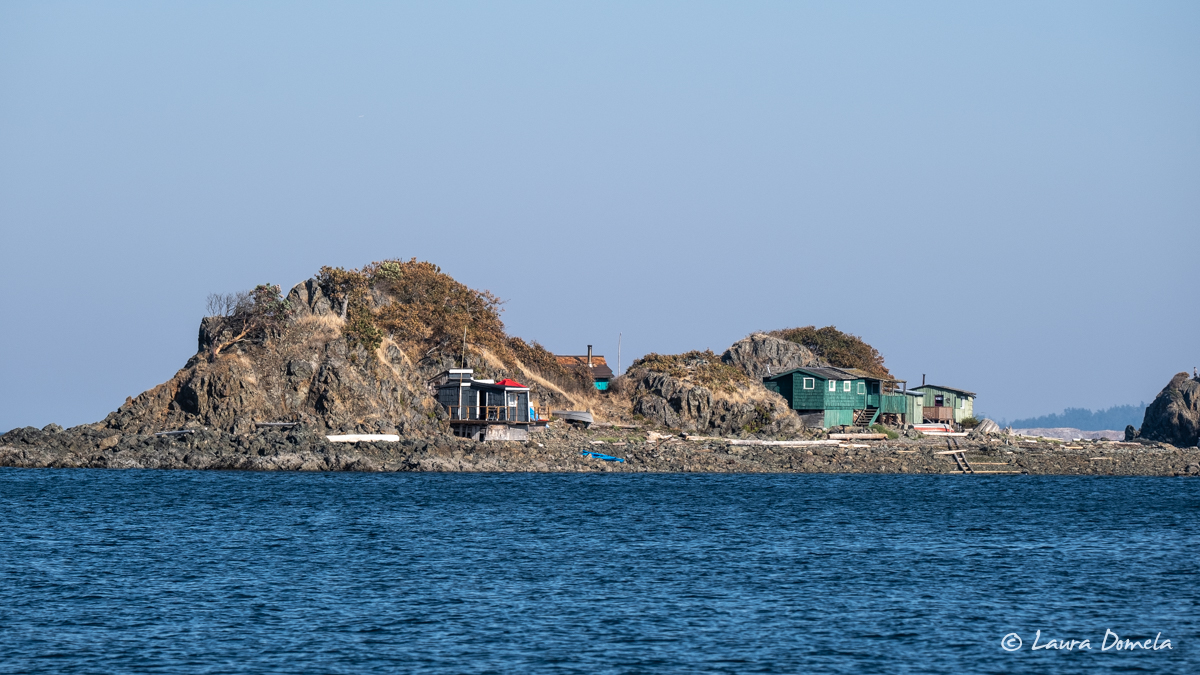
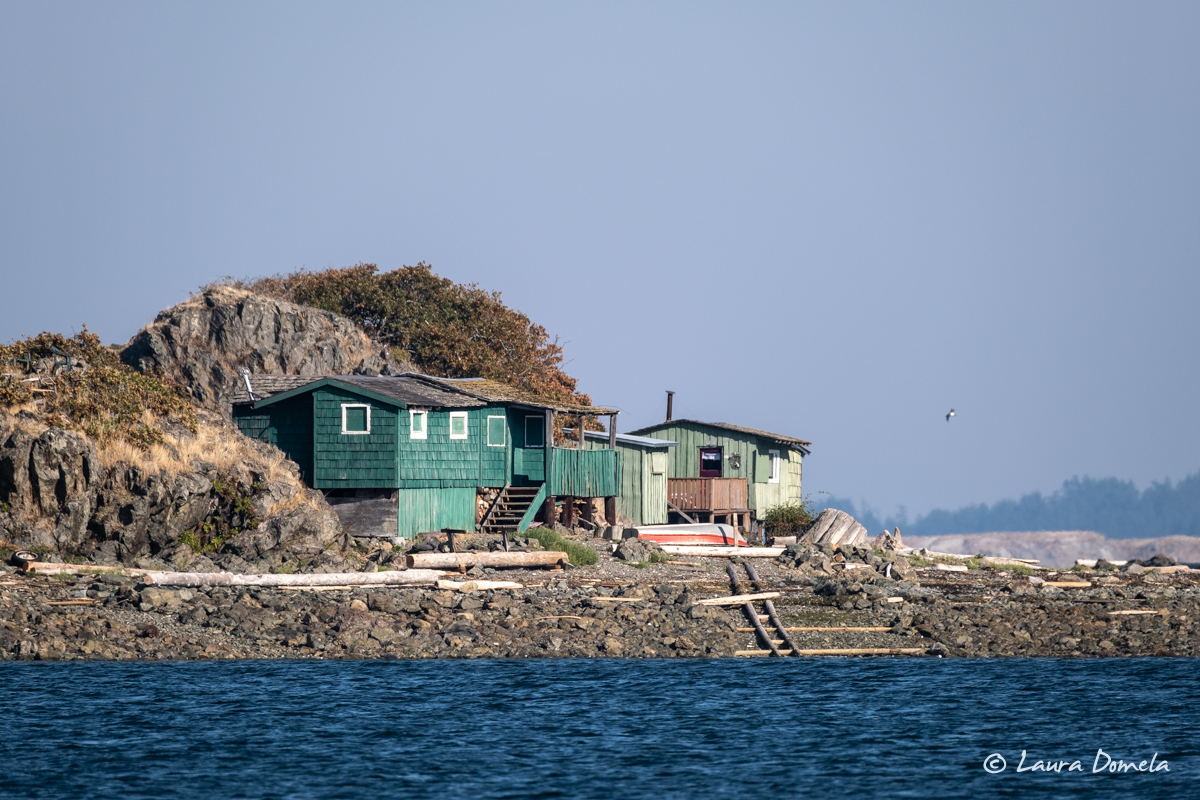
Sunset at Hammond Bay, looking northeast:
